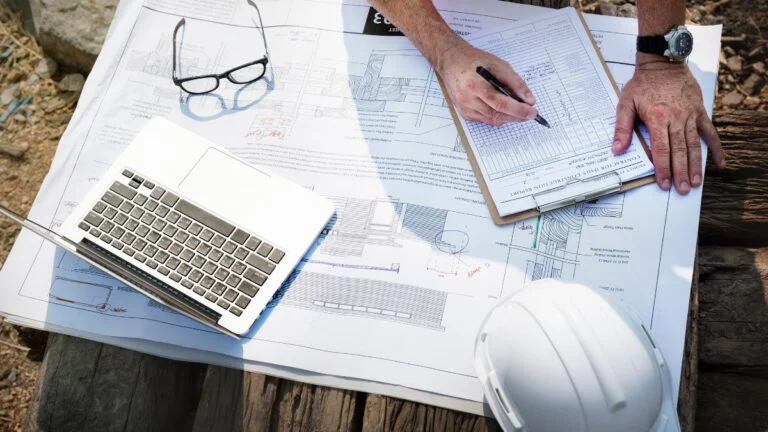News
Marine Demolition Explained: Precision and Planning Below the Surface
Published
5 months agoon
By
Ninja
Marine demolition is a highly specialized process that involves the systematic dismantling and removal of structures located either in or beneath water. Unlike land-based demolition, these aquatic projects must account for the challenges presented by tides, currents, submerged debris, and limited access. Typical objectives include clearing outdated docks, piers, jetties, bridges, or underwater pipelines to maintain navigational safety, support new construction, or rehabilitate natural habitats.
The complexities inherent to these operations mean that only experienced marine demolition contractors undertake such work. Their expertise encompasses understanding marine engineering and local ecosystems, as well as utilizing specialized equipment and adhering to stringent safety and environmental regulations. Skilled teams deliver outcomes that protect both people and the sensitive aquatic environments they serve, ensuring the demolition process is as efficient and risk-mitigated as possible.
Why Precision Matters Underwater
Precision in marine demolition cannot be overstated. The aquatic setting introduces unique risks—such as low visibility, rapidly changing currents, pressure variations, and the unpredictable presence of marine life—that demand an unparalleled level of control. Even a small miscalculation or poorly executed maneuver could endanger workers or cause unintended environmental damage. The intricate nature of underwater structures, including aging materials, corroded metal, and crumbling concrete, only heightens the importance of making calculated decisions at each stage.
Projects also frequently occur alongside active waterways, increasing the risk of downstream effects if debris is released unexpectedly. Due to these variables, contractors utilize advanced survey technologies, underwater sonar, and diver communication systems to coordinate every move. Many professionals conduct detailed pre-demolition modeling and continuous monitoring while dismantling, allowing for real-time adjustments based on changing site conditions. This focus on accuracy fosters successful outcomes and upholds safety as a top priority.
Tools and Techniques Used in Marine Demolition
The suite of tools and methods deployed for marine demolition reflect the need for accuracy, adaptability, and minimizing impact on surrounding ecosystems. Hydraulic cutters, for example, can slice through robust steel beams quietly and with controlled force, making them ideal for underwater applications where excess noise is a concern. Diamond wire saws are further employed on dense concrete—particularly in bridge or pier removal—ensuring that structures can be parted with minimal vibration and low risk to the integrity of what remains standing.
- Hydraulic Cutters: These offer high power in tight spaces, cutting through heavy elements without generating dangerous sparks or excessive noise that might disturb marine fauna.
- Diamond Wire Saws: Famed for their precision, they can be manipulated remotely and used to cut large, reinforced concrete sections with surgical accuracy, helping teams avoid unwanted collapse or scattered debris.
- Remote Operated Vehicles (ROVs): ROVs are invaluable when demolition targets are too deep or hazardous for human divers. They carry cameras and manipulator arms, offering real-time video and remote control capability.
- Controlled Explosives: Used only when necessary—and under strict regulatory protocols—explosives allow for rapid dismantling of massive underwater structures, such as derelict ships or bridge abutments, with heavy containment and monitoring to manage risk.
Tool and technique selection adapts to the project, factoring in not just the material and environment, but also the proximity of sensitive marine species, shipping activity, and existing infrastructure.
Steps Involved in a Typical Underwater Demolition Project
- Site Assessment and Risk Analysis: Crews thoroughly assess every detail—structure age, material integrity, local hydrography, and marine biology. This information shapes the safest and most efficient demolition plan, identifying both engineering and ecological risk factors.
- Permitting and Compliance: Multiple regulatory bodies oversee aquatic demolition. Obtaining the correct approvals ensures that all operations are both legal and eco-conscious, which may involve environmental impact assessments and public consultations.
- Mobilization: Logistics are paramount—large barges or floating platforms bring specialized equipment to the site, and safety zones are instituted to protect passing water traffic and marine life.
- Precision Removal: Technicians carry out the demolition, often working in shifts to maximize safety and productivity. A combination of diver-directed and remote techniques targets only the structure earmarked for removal, minimizing unnecessary disruption.
- Waste Management and Cleanup: All debris, including concrete, metal, and contaminated materials, is collected and sorted. Recycling, safe disposal, and post-project site assessment ensure the area is left safe for future use, restoration, or construction.
Meticulous adherence to each step means projects stay on time, budgets are maintained, and unforeseen complications are kept to a minimum, setting the stage for successful subsequent marine ventures.
Safety Challenges Unique to the Marine Environment
Underwater demolition teams face heightened risks far beyond those of traditional demolition. Divers may encounter decompression sickness from repeated ascents and descents, or risk entrapment in twisted metal and debris fields. Fast-moving tides and shifting sediment can quickly obscure vision or change site conditions, requiring continuous vigilance and communication.
Strict guidelines, as defined in the U.S. Occupational Safety and Health Administration’s maritime standards, outline procedures for dive planning, equipment maintenance, and emergency response. Teams often rely on backup breathing systems, real-time diver monitoring, and remotely operated safety equipment for redundancy. Training is a critical piece—crews practice handling unexpected scenarios, such as equipment failure, sudden entanglement, or exposure to hazardous materials, so rapid and coordinated action is assured even in high-stress situations.
Environmental Considerations in Underwater Operations
Environmental care is at the core of marine demolition. Regulations require teams to control not only physical debris but also silt plumes, vibrational energy, and chemical releases that can impact water quality and aquatic biodiversity. Contractors install containment curtains or turbidity barriers to control underwater sediments, while noise-reducing techniques protect the migratory patterns and breeding cycles of local fish and mammals.
Advances like acoustic shields, improved sediment traps, and remote environmental monitoring are now integral to the profession, significantly reducing the historical impact of marine demolition. Recent field studies have shown that technologies like these can cut underwater sound pollution, helping to safeguard dolphins, whales, and sensitive fish species in busy harbor and estuary sites during active demolition.
Recent Advances Shaping the Industry
The last decade has seen remarkable technological advancements accelerate the marine demolition sector. Sophisticated 3D modeling enables teams to visualize entire demolition sequences before work begins, allowing them to identify potential hazards and optimize workflows. High-resolution sonar provides detailed mapping of submerged structures, offering crucial data in complex or low-visibility environments.
The use of robotics—including smart, AI-powered ROVs and sensor-laden drones—has greatly expanded what’s possible. These machines undertake challenging removal tasks, collect debris from hard-to-reach places, and feed data back to crews on the surface, continuously improving safety and project efficiency.
What to Expect for the Future of Marine Demolition
As aging marine infrastructure continues to be replaced worldwide, marine demolition will become an increasingly vital and visible practice. The future holds a blend of stricter environmental standards and a deeper reliance on cutting-edge technology. Contractors are expected to develop even safer and more sustainable techniques, leveraging advancements in automation, data analytics, and green engineering.
In the coming years, wider adoption of autonomous underwater vehicles and artificial intelligence will further increase precision and reduce human risk. Projects will become more adaptive, leveraging real-time sensor data for in-progress plan modifications. This, when paired with a commitment to environmental recovery, means leading marine demolition professionals will set new benchmarks for safe, sustainable, and innovative underwater teardown.
You may like
News
Benefits of Hiring Workplace Discrimination Lawyers for Wrongful Termination Claims
Published
16 hours agoon
December 15, 2025By
Ninja
Key Takeaways
- Workplace discrimination lawyers are essential for navigating the complexities of wrongful termination cases.
- They provide critical legal guidance, ensure timely filing, and build strong cases with proper documentation.
- These attorneys can negotiate favorable settlements and offer courtroom representation if needed.
- Many employment lawyers work on a contingency-fee basis, making legal representation more accessible to more individuals.
- Attorneys help protect clients from retaliation and offer emotional support during difficult times.
Table of Contents
- Understanding Wrongful Termination
- Legal Expertise and Guidance
- Building a Strong Case
- Negotiating Settlements
- Representation in Court
- Protection Against Retaliation
- Contingency Fee Arrangements
- Emotional Support and Advocacy
- Conclusion
Understanding Wrongful Termination
Wrongful termination happens when an employee is dismissed in a way that violates their legal rights or public policy. This can include being fired due to protected traits such as race, gender, age, religion, or disability, as well as retaliation for reporting illegal activity or whistleblowing. Identifying the early warning signs of wrongful dismissal is crucial for pursuing justice. Indicators can include sudden changes in job duties, being left out of significant projects, or receiving negative performance evaluations after raising concerns—signs that are often overlooked but may indicate unlawful termination.
When these warning signs appear, consulting an attorney is strongly recommended. Reaching out promptly to a lawyer experienced in wrongful termination claim Jersey City, NJ, helps safeguard your rights and enables you to act quickly. Early legal guidance can also prevent employers from hiding discriminatory or retaliatory motives behind the dismissal.
Legal Expertise and Guidance
Navigating employment laws can be confusing due to their complexity and state-specific variations. Skilled workplace discrimination lawyers can interpret statutes that may otherwise be difficult to understand—such as the Fair Employment and Housing Act (FEHA) in California or Title VII of the Civil Rights Act of 1964. Their ability to translate legal jargon and apply it specifically to your situation can have a significant effect on the success of your claim. Experienced attorneys evaluate all evidence, ensure that the claim is filed within the applicable statute of limitations, and advocate for your best interests at every stage.
Attorneys also advise clients about the potential outcomes and available remedies. For example, wrongful termination claims can result in compensation for lost wages, reinstatement, back pay, and even punitive damages depending on the circumstances. By consulting with a knowledgeable lawyer, you maximize your chances of recovering what you deserve for an unfair dismissal.

Building a Strong Case
A well-documented claim can make all the difference in wrongful termination cases. Lawyers know what evidence to collect—such as personnel files, written warnings, termination letters, and email communications. They can also identify and interview potential witnesses who observed discriminatory remarks or retaliatory behavior. Experienced legal professionals often spot patterns—like a company repeatedly terminating employees after protected complaints—that suggest systemic problems within the workplace.
Negotiating Settlements
The majority of wrongful termination cases settle before reaching a courtroom. Lawyers skilled in negotiation can secure settlements that reflect the financial and emotional damages endured. They account for lost wages, benefits, reputational harm, and, in some cases, additional compensation for pain and suffering. Settlement negotiations also relieve the stress and uncertainty of a lengthy court process, allowing employees to move forward with their careers and lives.
Representation in Court
If settlement negotiations falter, legal representation in court becomes essential. Attorneys prepare compelling arguments, manage the procedural complexities of civil litigation, and effectively cross-examine adverse witnesses. One prominent example occurred in 2010, when attorney David Sanford secured a $253 million verdict for his client in a gender discrimination case against a major pharmaceutical company, demonstrating the transformative impact of proficient representation. Success often depends not just on the facts, but on the skill with which those facts are presented before the judge and jury.
Protection Against Retaliation
Fear of employer backlash deters many employees from speaking up after a wrongful termination. However, federal and state laws specifically prohibit retaliating against individuals who assert their workplace rights. A workplace discrimination lawyer helps you document any post-claim retaliation, advise on next steps, and file additional actions if further violations occur. This protection is not only vital for preserving your professional future but also provides peace of mind during an already stressful period.
Contingency Fee Arrangements
Many wrongful termination attorneys offer contingency fee structures, meaning they only collect payment if you win or settle your case. This arrangement removes financial barriers, ensuring that expert legal support is available regardless of your financial situation. According to WIPO insights, contingency fees can help level the playing field in legal disputes by making high-quality representation accessible to those who might not otherwise afford it. Major firms routinely extend these offers, making it easier for employees to pursue claims without upfront costs or added financial risk.
Emotional Support and Advocacy
Beyond their legal acumen, compassionate attorneys offer much-needed reassurance throughout the process. Facing a wrongful termination often brings emotional distress, anxiety, and uncertainty. Your lawyer not only stands up for your rights but also listens to your concerns and supports you through challenging moments. Having an advocate on your side offers not just hope for compensation, but for closure and a renewed sense of dignity as you move forward.
Conclusion
The advantages of hiring a qualified workplace discrimination lawyer for a wrongful termination claim are far-reaching. From deciphering complex employment laws to gathering critical evidence, negotiating settlements, and providing robust representation in court, attorneys play an indispensable role in pursuing justice. Their guidance ensures that employees receive fair treatment, protects them from further retaliation, and provides vital emotional support during a challenging experience.
News
Meet Studiae: Your Ultimate AI Study Partner
Published
5 days agoon
December 11, 2025By
Ninja
In an era where technology is reshaping Studiae every aspect of our lives, education has also seen a massive transformation. From digital classrooms to online learning platforms, technology has made learning more accessible and engaging. But one of the most groundbreaking advancements in the educational sphere is the rise of AI-powered study assistants. Among the leaders in this space is Studiae, an innovative AI study partner designed to help students excel academically in a personalized and efficient way.
Whether you’re a high school student preparing for exams, a university student working on assignments, or even a lifelong learner tackling new subjects, Studiae offers tools that are as advanced as they are intuitive. In this article, we’ll explore how Studiae is revolutionizing the way students study and the features that make it your ultimate AI study partner.
What is Studiae?
Studiae is an AI-driven study companion that provides students with personalized learning experiences, designed to maximize efficiency and understanding. Using advanced machine learning algorithms, natural language processing, and a vast database of knowledge, Studiae tailors its approach to suit each individual’s learning style, helping them tackle subjects and assignments with ease.
Unlike traditional study tools or tutoring services, Studiae is available 24/7, adapting in real-time to the needs of the user. Whether you need help understanding complex concepts, writing essays, or preparing for exams, Studiae is like having a dedicated tutor on standby—anytime, anywhere.
Key Features of Studiae
1. Personalized Learning Pathways
One of the standout features of Studiae is its ability to create personalized learning pathways. When you first start using Studiae, it assesses your strengths and weaknesses across a variety of subjects. Based on your current level of understanding, it then customizes your study sessions to focus on areas where you need the most improvement. This adaptive learning process ensures that you’re not wasting time on content you already understand, allowing you to spend more time mastering the topics that are challenging you.
2. Real-Time Assistance
Studiae isn’t just a static tool. It’s a dynamic partner that provides real-time assistance, whether you’re working through a difficult math problem, writing a research paper, or studying for a history test. You can ask questions, request explanations, or get instant feedback on assignments. Its natural language processing (NLP) capabilities allow it to understand and respond to your queries in a conversational manner, making it feel like you’re interacting with a human tutor.
3. Study Material Recommendations
Studiae offers more than just answers—it provides comprehensive study resources. Based on your learning progress and the subjects you’re working on, Studiae suggests articles, videos, exercises, and practice quizzes that complement your current study materials. Whether you need to dive deeper into a particular topic or explore additional perspectives, Studiae ensures you always have relevant content at your fingertips.
4. Interactive Quizzes & Practice Tests
Studiae helps you reinforce your knowledge with interactive quizzes and practice tests that adapt to your learning progress. These tests are not one-size-fits-all; they are designed to target your weak areas while reinforcing your strengths. You can take as many quizzes as needed, and Studiae provides detailed feedback to help you understand where you went wrong and how to improve.
5. AI-Powered Writing Assistance
For students working on essays, reports, or any type of writing assignments, Studiae offers powerful AI writing assistance. It can help you brainstorm ideas, outline your work, and even check for grammar, spelling, and plagiarism. But what truly sets Studiae apart is its ability to assist with the creative and analytical aspects of writing—guiding you on structuring arguments, refining your thesis statement, and improving your overall writing style.
6. Exam Preparation
Studiae excels in helping students prepare for exams. Whether it’s SATs, GREs, or final exams, Studiae provides comprehensive exam prep materials. It offers mock exams, time management tools, and personalized tips for maximizing performance on test day. The AI analyzes your progress and adjusts the difficulty level of practice questions to ensure you’re always challenged but never overwhelmed.
7. Collaboration Tools
Studiae understands that studying isn’t always a solo endeavor. It offers collaboration tools that allow you to connect with fellow students for group study sessions, share notes, or engage in peer review. By working together with others, you can gain new perspectives, solve problems faster, and ensure a well-rounded understanding of the material.
8. Progress Tracking and Feedback
Another powerful feature of Studiae is its ability to track your academic progress over time. The AI collects data on your study habits, exam performance, and knowledge gaps, providing insightful reports that help you understand your academic journey. With continuous feedback, Studiae ensures you’re on track to achieve your academic goals.
How Studiae Works
Getting started with Studiae is simple and intuitive. After signing up, you’ll be asked to input basic information about your current studies—subjects, academic level, learning preferences, and any specific goals you have (e.g., improving grades, passing an exam, etc.). From there, Studiae creates a customized learning plan just for you.
As you interact with the platform, Studiae learns more about your habits, preferences, and performance, adjusting the content it delivers accordingly. Whether you’re studying for a specific exam or just looking to deepen your understanding of a subject, Studiae is constantly evolving to meet your needs.
Why Choose Studiae?
Studiae isn’t just another AI tool—it’s a comprehensive learning platform that works tirelessly to help students succeed. Here are some key reasons to choose Studiae:
- Customizable Learning: Studiae adapts to your needs and offers a personalized learning experience that evolves as you do.
- 24/7 Availability: You can study anytime, anywhere, with an AI tutor that’s always available to assist.
- Holistic Approach: Studiae covers all aspects of learning, from theoretical understanding to practical application and exam preparation.
- Effective Time Management: With personalized study schedules and progress tracking, Studiae helps you manage your time effectively.
- Comprehensive Resources: From study guides and video lectures to quizzes and writing assistance, Studiae provides a wealth of tools to support your learning.
The Future of Education: AI-Powered Learning
As AI continues to advance, tools like Studiae are setting the stage for the future of education. The blend of personalized learning, real-time feedback, and adaptive technology makes Studiae a unique and indispensable resource for today’s learners. With its ability to support students in all stages of their academic journey, Studiae is positioning itself as the ultimate AI study partner for learners everywhere.
Whether you’re struggling to understand a concept or preparing for the most important exam of your life, Studiae is the intelligent, reliable, and ever-present study companion you’ve been waiting for. Embrace the future of education and make Studiae your trusted study partner today.
About the Author
Studiae is an innovative AI platform developed by a team of educators, engineers, and technologists committed to making learning more personalized, accessible, and efficient. Their mission is to harness the power of AI to create intelligent study partners that guide students toward success in their academic endeavors.
News
Kipflix: The Rising Streaming Platform Revolutionizing Entertainment
Published
2 weeks agoon
December 4, 2025By
Ninja
The entertainment landscape is in constant Kipflix evolution, with new streaming platforms emerging regularly to cater to the diverse needs of global audiences. While giants like Netflix, Amazon Prime, and Disney+ dominate the scene, smaller platforms are also making waves by offering unique content and specialized niches. One such platform making a mark in the entertainment world is Kipflix.
In this article, we’ll explore Kipflix—what it is, how it works, what sets it apart from its competitors, and its potential to disrupt the streaming industry.
What is Kipflix?
Kipflix is an emerging streaming service designed to offer users an affordable, user-friendly, and content-rich platform. Aimed at a broad audience, Kipflix strives to provide diverse programming, from movies and TV shows to documentaries and indie films. But Kipflix isn’t just trying to be another Netflix clone; it has a clear vision to carve out its own identity in the competitive streaming market by focusing on quality content and accessibility.
In many ways, Kipflix is positioning itself as an alternative to the traditional heavyweights, offering curated collections for niche interests while also serving mainstream viewers with a variety of well-known shows and movies.
The Key Features of Kipflix
- Affordable Pricing Structure
One of Kipflix’s strongest selling points is its affordability. With streaming costs rising on most major platforms, Kipflix has positioned itself as an option for users who don’t want to break the bank. The platform offers a competitive pricing tier, which allows access to its vast library of content for a fraction of the cost compared to other services. This affordability is crucial in attracting audiences in both emerging markets and price-sensitive demographics. - Content Variety and Original Programming
While many platforms focus on high-budget productions, Kipflix has taken a different approach by offering a mix of genres and types of content. It includes mainstream films, popular TV shows, independent films, web series, and even live programming. The platform has also begun investing in original content, with the aim of distinguishing itself with unique shows and films that appeal to both niche audiences and a broader base. - User-Friendly Interface
Kipflix’s interface is simple and intuitive, designed to make navigation as smooth as possible for viewers of all ages. Its easy-to-use design allows users to find their favorite content quickly, either through search features, curated recommendations, or genre-based browsing. The platform is optimized for multiple devices, including smartphones, tablets, smart TVs, and gaming consoles, ensuring a seamless experience across the board. - Customization and Personalization
A key differentiator for Kipflix is its investment in user experience. It offers personalized recommendations based on viewing habits and preferences, which allows users to discover content they may not have otherwise found. The more you use the platform, the better it becomes at understanding your tastes and suggesting new films, shows, or genres you might enjoy. - Global Content and Multilingual Support
In an increasingly globalized world, Kipflix has made it a priority to offer content from around the world, including foreign films and TV shows. In addition to English-language programming, Kipflix offers multilingual subtitles and dubbing, making its library accessible to viewers in various regions. This feature helps Kipflix tap into international markets, where demand for global content is growing. - Ad-Supported and Premium Options
For users looking for an even more affordable option, Kipflix offers an ad-supported tier. This allows users to access a broad range of content with occasional commercial interruptions. For those who prefer an uninterrupted experience, Kipflix also offers a premium, ad-free subscription model. This dual-tier system gives users the flexibility to choose based on their budget and viewing preferences.
Kipflix’s Competitive Edge: What Sets It Apart?
While Kipflix shares commonalities with major streaming services, it also has several unique attributes that make it stand out in the crowded market.
- A Focus on Indie and Local Productions
Kipflix has carved a niche by focusing on independent films, local content, and alternative programming that may not have a home on larger platforms. The service partners with indie filmmakers and regional studios to bring fresh voices to its platform. This has been a major draw for cinephiles and those seeking more experimental and less commercially-driven content. - Inclusion of Short Films and Web Series
Unlike many streaming platforms that focus mainly on full-length movies and series, Kipflix offers a vast array of short films and web series. These shorter formats appeal to younger viewers and those looking for quick entertainment. Kipflix also provides a platform for emerging creators to showcase their work, creating a dynamic and ever-evolving library of content. - Focus on Interactive Content
Another notable aspect of Kipflix’s offering is its investment in interactive content. In line with the growing trend of interactive storytelling, Kipflix has incorporated choose-your-own-adventure-style shows, where viewers can influence the plot’s direction. This innovative feature adds a layer of interactivity that traditional streaming services do not yet offer on a large scale. - Community Engagement
Kipflix is not just about passive viewing. The platform encourages community engagement through features like watch parties, forums, and chatrooms, where users can discuss shows and movies. This sense of community can transform the viewing experience, allowing audiences to share thoughts, recommend content, and connect over shared interests.
The Potential for Growth: Kipflix’s Future in the Streaming Industry
The streaming industry has seen exponential growth over the past decade, but it is also becoming increasingly saturated. To succeed, a platform must either provide exceptional content or find a niche that resonates with specific audiences. Kipflix, with its focus on affordability, diverse content, and user experience, appears well-positioned to carve out a significant place in this competitive space.
One of Kipflix’s main opportunities for growth lies in its international expansion. As internet access improves globally, audiences in emerging markets are becoming more digitally savvy and seeking affordable entertainment options. Kipflix’s commitment to multilingual content and a budget-friendly pricing model could make it an attractive option in countries where other streaming giants are less accessible.
Additionally, Kipflix has an exciting opportunity to further invest in original content, particularly in genres that are underserved by mainstream platforms. By creating unique, high-quality productions, Kipflix can differentiate itself from competitors and attract subscribers who are looking for something new and different.
Conclusion
Kipflix may still be in the early stages of its journey, but its potential to disrupt the streaming industry cannot be overlooked. With its affordable pricing, diverse content offering, and focus on user engagement, Kipflix is positioned to become a key player in the evolving landscape of digital entertainment. While it may not yet have the brand recognition of Netflix or Amazon Prime, Kipflix’s approach to offering a mix of mainstream and niche content gives it the flexibility to build a loyal and passionate audience.
For viewers looking for an alternative to the usual offerings on big-name platforms, Kipflix provides an exciting and fresh option. As it continues to expand its library, grow its original programming, and innovate with interactive and community-driven features, Kipflix could very well be the future of streaming entertainment.
Trending
-

 Blog7 months ago
Blog7 months agoAbraham Quiros Villalba: Complete Information
-

 Entertainment7 months ago
Entertainment7 months agoهنتاوي.com: Your Gateway to Arabic-Subtitled Anime
-

 Technology3 months ago
Technology3 months agoLinki: Unveiling the Digital Connector in the Modern Age
-

 News7 months ago
News7 months agoDGMNews.com: A Comprehensive Overview of the Emerging Digital News Platform
-

 Blog7 months ago
Blog7 months agoSimpcitt: A New-Age Urban Marvel or a Digital Mirage?
-

 Blog7 months ago
Blog7 months agoThe Historical and Cultural Significance of Tonghou: A Journey Through Time
-

 Blog7 months ago
Blog7 months agoUnveiling The Life And Journey Of Keilani Bautista
-

 Technology7 months ago
Technology7 months agoXlecz: Exploring the Potential of a Revolutionary New Concept
